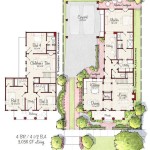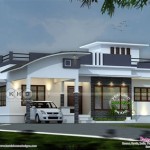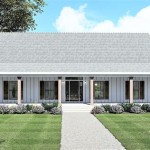Essential Aspects of Residential House Floor Plans
A well-designed floor plan is crucial for creating a comfortable, functional, and aesthetically pleasing home. When it comes to residential house floor plans, there are several key aspects to consider. By understanding these essential elements, you can create a plan that meets your specific needs and preferences.
Layout and Flow
The overall layout of your floor plan should promote easy flow and accessibility between different rooms. Consider traffic patterns and ensure there is a logical connection between spaces, such as the kitchen being adjacent to the dining room. Avoid bottlenecks or awkward transitions that can hinder movement.
Space Allocation
Determine the appropriate space allocation for each room based on its intended use. Consider the size of furniture, storage needs, and natural light availability. Each room should have sufficient space for comfortable movement and daily activities.
Functionality and Efficiency
A functional floor plan prioritizes efficiency and practicality. Group similar functions together, such as placing the kitchen appliances in a work triangle. Utilize space-saving solutions like built-in storage or multi-functional furniture to maximize the use of available space.
Flexibility and Adaptability
Consider the potential for future changes in your lifestyle or needs. Incorporate flexible elements into your floor plan, such as open-concept spaces or movable walls, to allow for easy reconfiguration as required.
Natural Lighting and Ventilation
Natural light and ventilation are essential for creating a healthy and inviting living environment. Orient windows and doors to maximize natural light and cross-ventilation, which can reduce energy consumption and improve indoor air quality.
Privacy and Personal Spaces
Balance open and shared spaces with private areas for relaxation and privacy. Consider the location of bedrooms and bathrooms in relation to common areas, ensuring privacy while still maintaining a sense of connection.
Outdoor Connections
Incorporate outdoor spaces into your floor plan, such as patios, balconies, or courtyards. These areas extend the living space and provide opportunities for fresh air, relaxation, and entertainment.
Consideration for Accessibility
If accessibility is a concern, design a floor plan that accommodates universal design principles. This includes wider doorways, ramps, and accessible bathrooms to ensure comfort and ease of use for all occupants.
Additional Tips
- Hire a professional architect or designer to ensure the technical accuracy and aesthetic appeal of your floor plan.
- Get feedback from family members or trusted friends to incorporate diverse perspectives.
- Start with a rough sketch and gradually refine it based on your needs and preferences.
By incorporating these essential aspects into your residential house floor plan, you can create a space that truly reflects your lifestyle and enhances your daily living experience.

Single Two Y Display Homes In Perth Apg House Plans Double Residential
How To Do A Floor Plan For Residential Quora

Simple Floor Plans Qdhl7 Home Design Tiny House

Free Residential Home Floor Plans Evstudio

Cape Cod House Plan With 3 Bedrooms And 2 5 Baths 7645

House Plans Floor Easy Search Form

Seagrass Sketchpad House Plans

8 Unit 2 Bedroom 1 Bathroom Modern Apartment House Plan 7855

Floor Plans Types Symbols Examples

How To Read A Floor Plan With Dimensions Houseplans Blog Com








